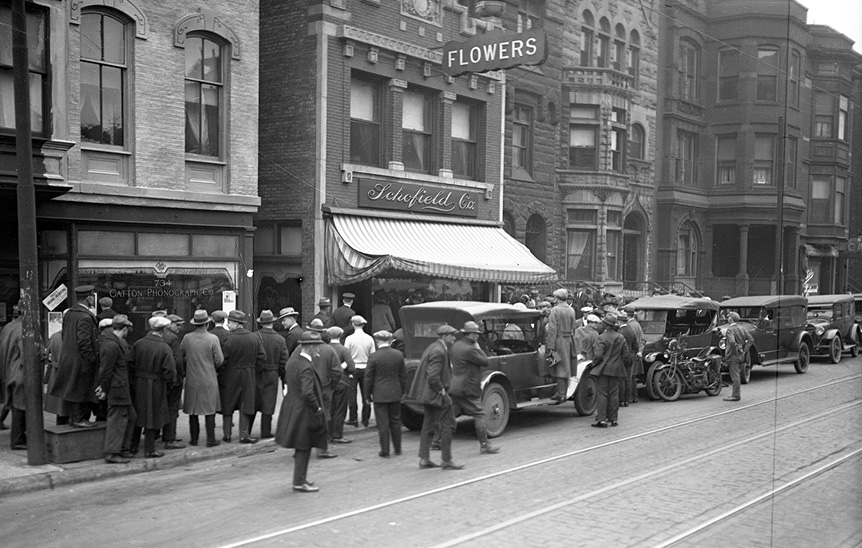Charles Dean O’Banion
November 10, 1924
Cagney’s “Public Enemy”
Charles Dean O’Banion was something of an enigma. He had been a choirboy in his childhood and as an adult went to mass every Sunday, dropped money in the poor box, and worked in his flower shop.
But make no mistake, O’Banion was also an audacious and flagrant criminal. A major player in Chicago during the Roaring Twenties, he was both associate and adversary of Johnny Torrio and Al Capone. Between the three of them they owned Chicago, and the other mobs—the Genna brothers included—had to be content with what was left. O’Banion was big news in his day, and it was largely him (and his lieutenant, Hymie Weiss) whom James Cagney was imitating when he hitched back his shoulders and curled his lips into that predatory baby-faced sneer in The Public Enemy. Seeing that look, the audience knew that murder would follow.
O’Banion ran the North Side of Chicago, with the gang’s headquarters in his flower shop. Called Schofield’s, it was the place the gangsters went to when buying those large floral tributes for their fallen comrades. The shop was a front, of course, but O’Banion came to love pottering among the plants and pruning the leaves.
In 1920, with the dawn of Prohibition, it had been Torrio’s idea to divide the city among the gangs. The division would allow everyone to get their fair share, while keeping a potential powder keg under control. After all, there was money to be made, but only if everyone played the game.
The plan worked well enough until about 1923, when the various mobsters began to chafe under the arrangement. As the year progressed the Gennas were making serious inroads into O’Banion’s territory, while he, always happy in a heist, started hijacking whisky deliveries meant for the other mobs. Still trying to keep a lid on things, Torrio ceded O’Banion prime turf in the South Side, also throwing in a share in his nightclub, The Ship, to sweeten the deal.
But the capper came in 1924. Spending some time at The Ship, O’Banion learned that “Bloody” Angelo Genna had racked up a whopping gambling bill of over $30,000. Capone was inclined to let the matter drop, but not O’Banion. Supposedly, he got on the phone to Angelo and demanded payment of the debt within the week. It was an affront to the Genna boss, but it also made a handy excuse to force the issue. A vote was taken and the mobsters were unanimous—O’Banion would have to go.
It happened in the flower shop. O’Banion was there that day in the back room, preparing wreaths for recently deceased mob “fixer” Mike Merlo. The memorials were expensive and O’Banion had been asked to oversee them himself. He wasn’t overly surprised then when the bell rang and three men, one of whom is believed to have been enforcer Frankie Yale, entered the shop. One of the men took O’Banion’s hand in a fraternal grasp, then wouldn’t let go. He was trapped, while the two other men drew their guns and shot him in the chest and throat. He died almost instantly.
With the murder of O’Banion, Chicago exploded in one of the bloodiest gang wars in mob history.

A crowd gathers around gangster Dean ‘Dion’ O’Banion’s flower shop in Chicago, after he was shot seven times with a .45-caliber automatic pistol on the 10th of November, 1924.